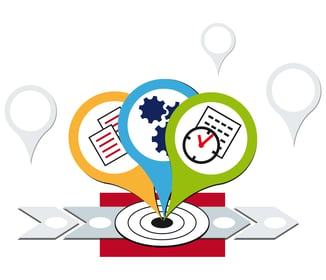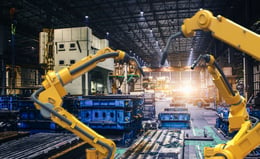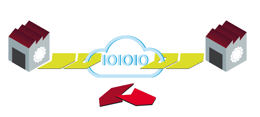How Will Industry 4.0 Change Sales and Operations Planning?
Jesse Kelber - July 09, 2019

 Transparency is at the heart of both Industry 4.0 and the sales & operations planning process. Without visibility into every aspect of a supply chain, planners have no way to know for sure how something they do today will impact another department or team in the months to come. With visibility into those teams’ processes to see where the overlap is, they can see clearly how each move they make will impact the rest of the company and can better ensure that the entire value chain is protected from non-compliance. This may look different for production planners and operations managers, as each has their own priorities and needs. different needs. It can also look different at each stage of the plan from the same department, but the bottom line remains the same—visibility into the planning process is key to successful implementation.
Transparency is at the heart of both Industry 4.0 and the sales & operations planning process. Without visibility into every aspect of a supply chain, planners have no way to know for sure how something they do today will impact another department or team in the months to come. With visibility into those teams’ processes to see where the overlap is, they can see clearly how each move they make will impact the rest of the company and can better ensure that the entire value chain is protected from non-compliance. This may look different for production planners and operations managers, as each has their own priorities and needs. different needs. It can also look different at each stage of the plan from the same department, but the bottom line remains the same—visibility into the planning process is key to successful implementation.
How Transparency Forms the Core of Industry 4.0
For a business to compete in the global marketplace, it has to be agile. That means the ability to pivot fast as market demands shift. Industry 4.0 incorporates software platforms and technology that allows for complete transparency of the end-to-end supply chain. Some of the technology making possible the digital transformation of Industry 4.0 includes IoT-enabled sensors, RFID tags, and digital twins. Sensors can be installed in the warehouse to track RFID-equipped stock in order to monitor supply levels, while a digital twin of that same facility can let planners model proposed changes and proactively forecast changing supply needs with the assistance of AI. This level of transparency was unheard of until the development of Industry 4.0 technology made it possible.
This degree of visibility into the supply chain extends to the S&OP process as well. When the sales team needs to know if there’s enough mission critical stock on hand for a last minute order from a major customer, RFID tags and IoT sensors deployed to your warehouses help them find out in real-time. They can then earmark that stock for the customer before it’s claimed for another use. Having this level of visibility into the supply chain makes planning for the next 3-9 months much easier and faster because planners know they can find the information they need when they need it. And that kind of planning ability keeps the value chain solid, the ROI high, and the executives happy.
Information Silos: Eliminating a Major Pain Point for Planners
Information silos are the bain of any logistics planner’s existence. WIthout access to the information across the company, they are unable to accurately forecast demand, understand the budget situation, or gain an accurate customer count. Documentation becomes much more streamlined when processes are being tracked and data output formats standardized. Then, all of this information can be exported to a single source of truth (SSOT) in the form of a data storehouse or repository. Now, planners only have to look to this one location going forward to obtain all the information they need to accurately forecast and plan for all contingencies. Industry 4.0 technology is what makes SSOTs possible and relatively straightforward to create, allowing data silos to become a thing of the past.
The Digital Twin: The Ultimate Expression of Industry 4.0?
Perhaps the single technology that best sums up the potential of industry 4.0 is the digital twin. This is a virtual model of your organization, including the manufacturing equipment, supplies, product stocks, vehicles, office machinery, IT infrastructure--even the employees are represented. All of this exists in a computer model that can be manipulated to see how various inputs now may impact future production, earnings, etc. Since the twin includes all aspects of the production environment, the possibilities for planners to model upcoming improvements and account for possible disruptions (think weather events or fuel cost surges) is enormous. Your S&OP team can input the parameters to be tested, then let the AI run simulations based on the current state of the company and the variables you are testing to produce a report detailing the possible outcomes.
Imagine this: your planners are working on the implementation of a new ERP for one of your 4 warehouses. It’s time to bring it in line with the others spread around the world so any data you collect will all be in the same format and easier for stakeholders to access and use. By rolling out this new deployment in a DT first, you can easily see what impact this deployment will have on the rest of the organization. And because you’re using a virtual model of the company, it’s far less expensive and you don’t risk causing any unforeseen disruptions. Then, once you’re satisfied with the twin model, you can use the parameters and policies from the model to complete the implementation in the real world.
What does all this technology mean for your S&OP?
S&OP focuses on mid-long range planning. This gives you an advantage in that you can use historical data combined with future forecasts to give you a much more detailed idea of what that future holds, which you can then work into your planning. With advanced analytics empowered by Industry 4.0, you’re gaining the ability to fine-tune these predictive models, allowing for much better detailing in your demand forecasts. IoT sensors are at the heart of a digital twin for a manufacturing facility. The insight these sensors and the AI at the heart of a DT provide your planners is unprecedented. Without the development of these technologies, production planners would still be relying on gut feelings and intuition when it comes to planning for best and worst possible scenarios.
Every stakeholder in every business process across the organization can now easily access whatever company data they need when they need it, in a format they can use. Thanks to the technological leap that is Industry 4.0, all of the transparency, modeling capabilities, and data integrity you could possibly need can finally be yours. The ability to see into the end-to-end supply chain, model disruptions, and access company data all in real-time is revolutionizing the S&OP world. With this technology in place, planners can efficiently and effectively forecast demand and plan workarounds in the case of a disruption, all the while taking into account historical data on the precise as-is state of the production process.
LATEST POSTS
- Understand Circular Economy in The Manufacturing Industry
- How Can Industry 4.0 IT Integration Be Achieved Smoothly?
- The Significance of Order Sequencing in Discrete Manufacturing
- How to improve your Supply Chain Management: The Power of Control Towers
- Optimizing Human Resource Scheduling in Manufacturing: A Technological Approach



